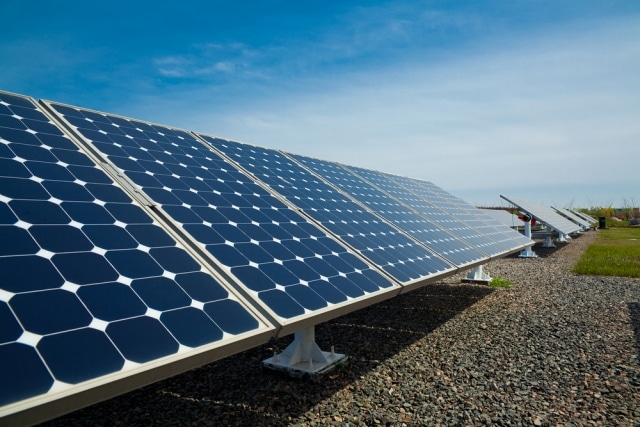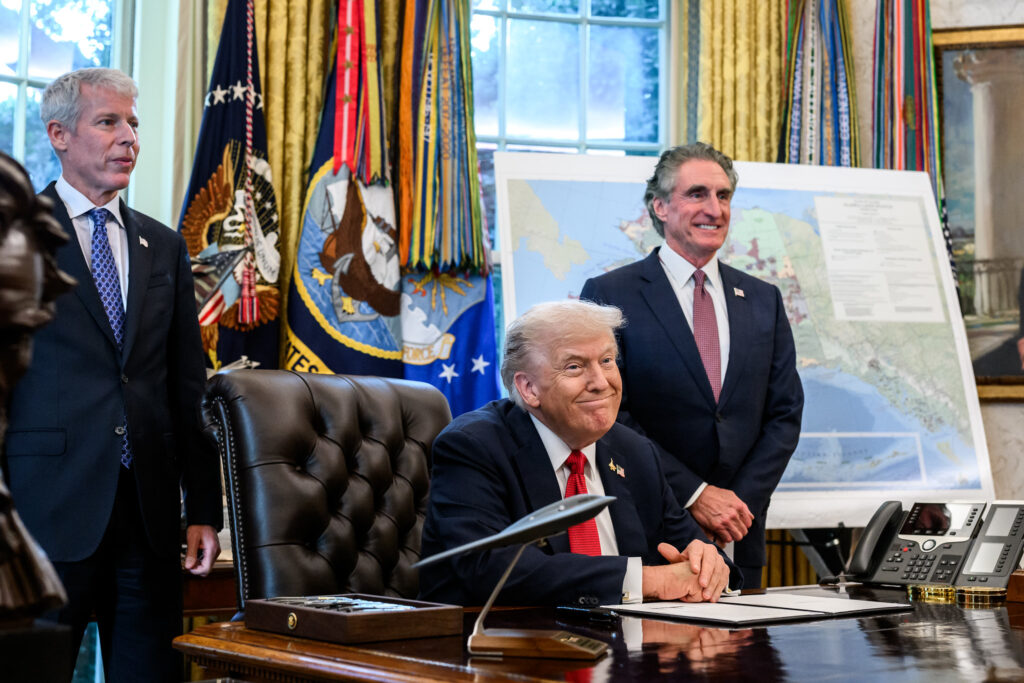The steady march of renewable energy, primarily wind and solar, toward mainstream usage continued apace in 2014.
Here are the top 5 clean energy revolution stories in the U.S. this year:
• Solar And Wind Continued To Surge In The U.S.
In November 2014, nearly three-fourths (71.82%) of the 873 megawatts (MW) of new electricity generation capacity installed in the U.S. was powered by wind and solar, according to data from the Federal Energy Regulatory Commission. Clean energy installations kept up at a furious pace this year, with renewable sources providing the majority of newly installed electricity generation capacity in nine of the past 11 months.
The Obama Administration has made renewable energy targets a key aspect of the emissions reductions it hopes to achieve with the Environmental Protection Agency’s Clean Power Plan, but those targets have been criticized as not nearly ambitious enough. Many states like California, Colorado and Hawaii, have already set their own goals that meet or beat those proposed in the EPA‘s plan. Local governments in cities like Austin, TX and Burlington, VT are committing to strong clean energy policies, as well.
Perhaps they’re inspired by the example set by countries like Scotland, which has shown that it is possible to generate more than enough electricity to meet all household needs via renewable sources.
Renewable energy (including water, wind, solar and geothermal sources) now accounts for more than 15% of total installed generating capacity in the U.S.
• California And Texas Set Renewable Energy Records
The fact that California and Texas both set renewable energy records this year points to a clear trend of renewable energy scaling up nationwide in blue and red states alike. Solar had a huge year in 2013, as well, with California, Arizona and North Carolina taking the top three spots in terms of new solar capacity installed. As divided as the U.S. is along partisan lines these days, one thing we can all agree on is that the time has come for clean energy to supplant antiquated fossil fuel technologies.
• Federal Renewable Energy Loan Program Is Paying Off
Opponents of clean energy tried to use the failure of solar panel maker Solyndra in 2011 as a political cudgel to bash all government support of the renewables sector, specifically targeting the U.S. Department of Energy’s Loan Program Office, which has made some $21.71 billion in loans to help spur the growth of technologies like utility-scale solar energy and electric vehicles.
So it was kind of a big deal when the Energy Department reported that the loan program has reached solvency just two years later. The program’s $780 million in losses has been more than made up for by the $810 million in interest already collected. Though this doesn’t mean the program itself will generate any monetary profits, the fact that electric car manufacturer Tesla was able to repay its $465 million loan nine years early shows that the program is having the intended effect of helping to build a robust clean energy economy.
• Utilities Are Trying To Steal The Rooftop Solar Business Model, And The Walton Family Is Trying To Kill It
On the face of it, the news that utility companies are now trying to steal the rooftop solar business model might sound like bad news—and the same could probably be said of the fact that the Walton family, owners of Walmart, are using their family foundation to try and destroy the rooftop solar business model altogether.
But the fact that both the utility industry and the billionaire Waltons now see distributed rooftop solar as such a threat that they are either trying to co-opt the business model or defeat it altogether shows that they see it as a viable alternative to dirty energy. And well they should.
Solar, for instance, accounted for 36% of all new electricity generation capacity installed in the U.S. through the first three quarters of 2014, according to the Solar Energy Industries Association. The average price of a solar PV panel has dropped by 63% over the past three years, so it’s no wonder that some 600,000 households and businesses have gone solar. Residential solar led industry growth through Q3 2014, with installations up 58% over last year.
If this kind of growth can be sustained, it represents a huge threat to the business models the utility companies and the Walton family have used to build their highly profitable empires. Renewable energy will revolutionize the way we power our society, which is what utilities are finally, begrudgingly, coming to accept, even if it isn’t anything more than a belated attempt to cash-in.
Meanwhile, distributed energy systems will democratize who profits from energy generation, which is what the corporatist Walton family is hoping to stop.
In other words, 2014 presented plenty of evidence that the clean energy revolution is at hand.
• Solar Could Be The World’s Biggest Source Of Energy By 2050
The International Energy Agency released two “Technology Roadmap” reports this year showing that solar photovoltaic (PV) systems could supply 16% of the world’s electricity needs by 2050, while concentrated solar power (CSP) plants could provide another 11%. In other words, solar could be the world’s single largest source of energy within the next few decades—but only if politicians and other policymakers provide “clear, credible and consistent signals” of support for renewables, according to the IEA.
But the future is not only bright for solar. Another report, by the Global Wind Energy Council and Greenpeace International, showed that wind power could provide 25-30% of global energy needs by 2050 if fossil fuel companies and other vested interests don’t get in the way.
China’s commitment to produce 20% of its energy from zero-emission sources by 2030 as part of the historic climate deal it struck with the U.S. could have a big impact on the global market for renewable technologies.
A worldwide shift to renewables would not only make sense as a means of lowering emissions and combating climate change, but, according to two reports published by the Climate Policy Initiative, it would also make economic sense, saving the global economy as much as $1.8 trillion compared to sticking with fossil fuels.
As the inventor Thomas Edison said in a 1931 conversation with his friends Henry Ford and Harvey Firestone: “I’d put my money on the sun and solar energy. What a source of power! I hope we don’t have to wait until oil and coal run out before we tackle that.”
Here’s to hoping 2015 moves us closer, rather than farther, from Edison’s dream.
Image Credit: wang song / Shutterstock.com
Subscribe to our newsletter
Stay up to date with DeSmog news and alerts






